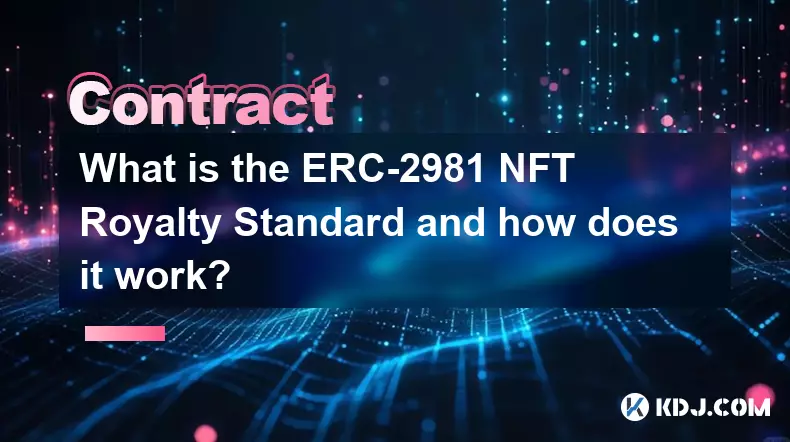-
 bitcoin
bitcoin $102182.982207 USD
-0.92% -
 ethereum
ethereum $3438.744518 USD
0.12% -
 tether
tether $0.999933 USD
0.02% -
 xrp
xrp $2.405093 USD
0.05% -
 bnb
bnb $956.306114 USD
-0.53% -
 solana
solana $153.028851 USD
-1.23% -
 usd-coin
usd-coin $0.999800 USD
-0.03% -
 tron
tron $0.294898 USD
-1.08% -
 dogecoin
dogecoin $0.171428 USD
-0.58% -
 cardano
cardano $0.551186 USD
-1.15% -
 hyperliquid
hyperliquid $38.755878 USD
0.04% -
 chainlink
chainlink $15.298460 USD
-0.05% -
 bitcoin-cash
bitcoin-cash $516.067428 USD
1.68% -
 stellar
stellar $0.280726 USD
-0.42% -
 zcash
zcash $518.919369 USD
18.01%
How to create a simple smart contract with Solidity?
Set up your Solidity dev environment with Node.js, Hardhat, and the Solidity compiler, then write, compile, and test a basic contract like Lock.sol locally.
Nov 06, 2025 at 05:30 am

Setting Up Your Development Environment
1. Install Node.js and npm to manage dependencies and run local tools required for Solidity development.
2. Use npm to install Hardhat, a powerful Ethereum development environment that supports writing, testing, and deploying smart contracts.
3. Initialize a new Hardhat project using npx hardhat in your terminal, which sets up the basic folder structure and configuration files.
4. Install the Solidity compiler by adding it as a dependency through Hardhat’s plugin system, ensuring compatibility with your target EVM version.
5. Create a new file called Lock.sol inside the contracts directory to begin writing your first contract.
Writing a Basic Smart Contract in Solidity
1. Start the Solidity file with the pragma statement specifying the compiler version, such as pragma solidity ^0.8.0;.
2. Define a contract using the contract keyword followed by a name like Lock, encapsulating all logic within curly braces.
3. Declare a state variable to store data on-chain, for example: uint public unlockTime; and address payable public owner;.
4. Implement a constructor that runs once when the contract is deployed, setting initial values such as the owner and unlock timestamp.
5. Add a function like withdraw() that includes access control using modifiers or require statements to restrict execution to the owner after a certain time.
Solidity's modifier feature allows developers to reuse validation logic across multiple functions, improving code readability and reducing redundancy.
Compiling and Deploying the Contract Locally
1. Write a deployment script in the scripts folder using JavaScript or TypeScript to instantiate and send the contract to a local network.
2. Use Hardhat’s built-in network to simulate an Ethereum environment without spending real funds during testing.
3. Run the compile command npx hardhat compile to ensure there are no syntax errors and generate ABI artifacts.
4. Execute the deployment script via npx hardhat run scripts/deploy.js to deploy the contract to the local node.
5. Capture the deployed contract address for interaction and verification in subsequent steps.
Testing the Smart Contract Behavior
1. Create a test file in the test directory to validate core functionalities like ownership and time-based withdrawal rules.
2. Use ethers.js within tests to interact with the deployed contract instance and simulate user actions.
3. Employ Mocha-style describe and it blocks to organize test cases clearly and assert expected outcomes using Chai assertions.
4. Simulate edge cases such as early withdrawal attempts and unauthorized access to verify security constraints.
5. Run the full test suite using npx hardhat test to confirm reliability before considering external deployment.
Frequently Asked Questions
What tools can I use to write Solidity code comfortably?Popular options include Visual Studio Code with the Solidity extension, Remix IDE for browser-based editing, and Hardhat for integrated testing and deployment workflows.
How do I handle integer overflow in Solidity?Starting from Solidity 0.8.0, arithmetic operations automatically check for overflow and underflow, reverting transactions if detected. No need to rely on external libraries like SafeMath unless using older versions.
Can I modify a smart contract after deployment?No, deployed contracts are immutable. Any changes require redeploying a new instance. Developers often use proxy patterns to simulate upgradability while maintaining data continuity.
What is the purpose of the ABI in Solidity projects?The Application Binary Interface (ABI) defines how to interact with the contract, listing functions, parameters, and return types. It is essential for frontends and external tools to call contract methods correctly.
Disclaimer:info@kdj.com
The information provided is not trading advice. kdj.com does not assume any responsibility for any investments made based on the information provided in this article. Cryptocurrencies are highly volatile and it is highly recommended that you invest with caution after thorough research!
If you believe that the content used on this website infringes your copyright, please contact us immediately (info@kdj.com) and we will delete it promptly.
- Penny Production Halted: A Historic Move for US Currency
- 2025-11-13 12:45:01
- Upgrade Your Kitchen & Win a Trip to Türkiye with a New Hood & Water Purifier!
- 2025-11-13 13:00:02
- Ripple, XRP, Warning: Navigating the Deepfake Crypto Scam Landscape
- 2025-11-13 08:50:01
- The US Mint, Pennies, and Circulation: End of an Era?
- 2025-11-13 08:45:01
- Penny's End: Production Ceases in Cost-Saving Move
- 2025-11-13 13:00:02
- Penny's End: Production Halt Sparks Cost-Saving Debate
- 2025-11-13 10:40:01
Related knowledge

What is a Denial of Service (DoS) attack in a smart contract and what are its common forms?
Nov 10,2025 at 05:20am
Understanding Denial of Service in Smart Contracts1. A Denial of Service (DoS) attack in the context of smart contracts refers to a scenario where a m...

What is a cryptographic nonce used for in transaction signing?
Nov 11,2025 at 05:59am
Understanding Cryptographic Nonces in Blockchain Transactions1. A cryptographic nonce is a random or pseudo-random number used only once in the contex...

How does inheritance work in Solidity smart contracts?
Nov 11,2025 at 10:40pm
Inheritance in Solidity: Building Modular Smart Contracts1. Inheritance in Solidity allows one contract to adopt the properties and functions of anoth...

What is the difference between an Externally Owned Account (EOA) and a Contract Account?
Nov 13,2025 at 04:00am
Understanding Externally Owned Accounts (EOA)1. An Externally Owned Account is controlled directly by a private key, which means only the holder of th...

What is the ERC-2981 NFT Royalty Standard and how does it work?
Nov 13,2025 at 05:39am
Understanding the ERC-2981 NFT Royalty Standard1. The ERC-2981 standard is a proposed Ethereum Request for Comment that introduces a royalty mechanism...

What is a Minimal Proxy Contract (EIP-1167) and how does it save gas on deployment?
Nov 12,2025 at 11:39am
What is a Minimal Proxy Contract (EIP-1167)?1. A Minimal Proxy Contract, standardized under Ethereum Improvement Proposal (EIP) 1167, is a lightweight...

What is a Denial of Service (DoS) attack in a smart contract and what are its common forms?
Nov 10,2025 at 05:20am
Understanding Denial of Service in Smart Contracts1. A Denial of Service (DoS) attack in the context of smart contracts refers to a scenario where a m...

What is a cryptographic nonce used for in transaction signing?
Nov 11,2025 at 05:59am
Understanding Cryptographic Nonces in Blockchain Transactions1. A cryptographic nonce is a random or pseudo-random number used only once in the contex...

How does inheritance work in Solidity smart contracts?
Nov 11,2025 at 10:40pm
Inheritance in Solidity: Building Modular Smart Contracts1. Inheritance in Solidity allows one contract to adopt the properties and functions of anoth...

What is the difference between an Externally Owned Account (EOA) and a Contract Account?
Nov 13,2025 at 04:00am
Understanding Externally Owned Accounts (EOA)1. An Externally Owned Account is controlled directly by a private key, which means only the holder of th...

What is the ERC-2981 NFT Royalty Standard and how does it work?
Nov 13,2025 at 05:39am
Understanding the ERC-2981 NFT Royalty Standard1. The ERC-2981 standard is a proposed Ethereum Request for Comment that introduces a royalty mechanism...

What is a Minimal Proxy Contract (EIP-1167) and how does it save gas on deployment?
Nov 12,2025 at 11:39am
What is a Minimal Proxy Contract (EIP-1167)?1. A Minimal Proxy Contract, standardized under Ethereum Improvement Proposal (EIP) 1167, is a lightweight...
See all articles










































































